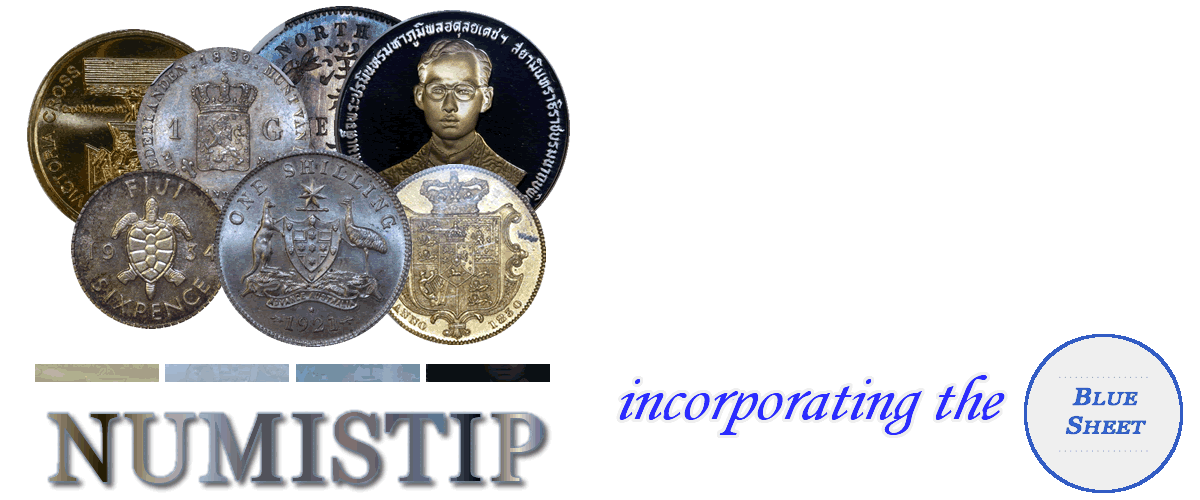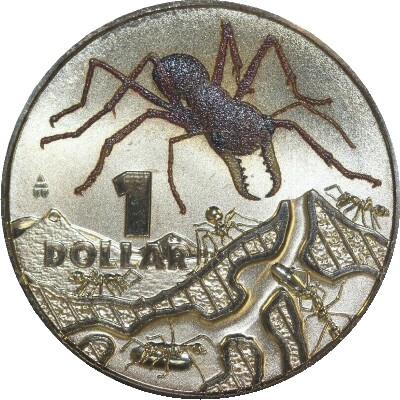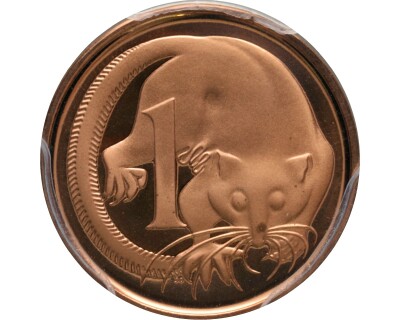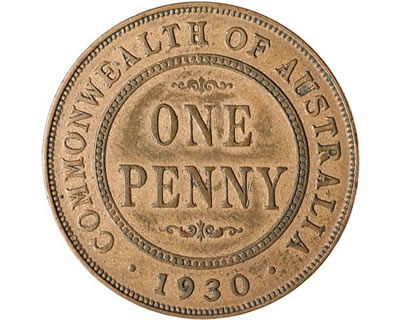



? The 2014 Bright Bugs Series is the Royal Australian Mint's fifth animal series, following the popular Ocean, Land, Sea, and Polar series. The Bright Bugs series encompasses six, uncirculated coins, each depicting some of Australia's most interesting insects; the Blowfly, Ulysses Butterfly, Cuckoo Wasp, Stag Beetle, Grasshopper, and Red Bull Ant. The series was periodically released in pairs throughout the year in specially designed cards. The giant red bull ant can be found throughout most ...

? The Type III Shield sovereign features the Imperial shield design on the reverse paired with William Wyon's portrait of Queen Victoria on the obverse. It differs from the Type II Shield sovereign by having a smaller bust. A key identification point is illustrated below. The mint of this issue can be identified by a mintmark beneath the shield on the reverse as shown in the illustrations below: The absence of a mintmark or the presence of a die number indicates a London ...

? The Type I twenty cent was issued from 1966 to 1984 with an additional proof striking in silver in 2006 as part of the 40th anniversary of decimal coinage set. The reverse features Stuart Devlin's platypus design and the obverse features Ian Rank-Broadly's portrait of HM Queen Elizabeth II. The issue was struck at the Royal Australian Mint in all years with additional assistance provided by the Royal Mint London in 1966 to address the huge demand for new currency as a ...

? The 2000 mule dollar was an error coin in which the coin was struck with the obverse die of a ten cent which is slightly smaller than a one dollar die thus producing a double rim on the obverse. Glossary reverse: The tails side of the coin

? The Type II Shield sovereign features the Imperial shield design on the reverse paired with William Wyon's portrait of Queen Victoria on the obverse. It differs from the Type I Shield sovereign by the designer's initials, WW appearing raised within the truncation beneath the bust. It differs from the Type III Shield sovereign by having a larger bust. A key identification point is illustrated below. The mint of this issue can be identified by a mintmark beneath the shield ...








